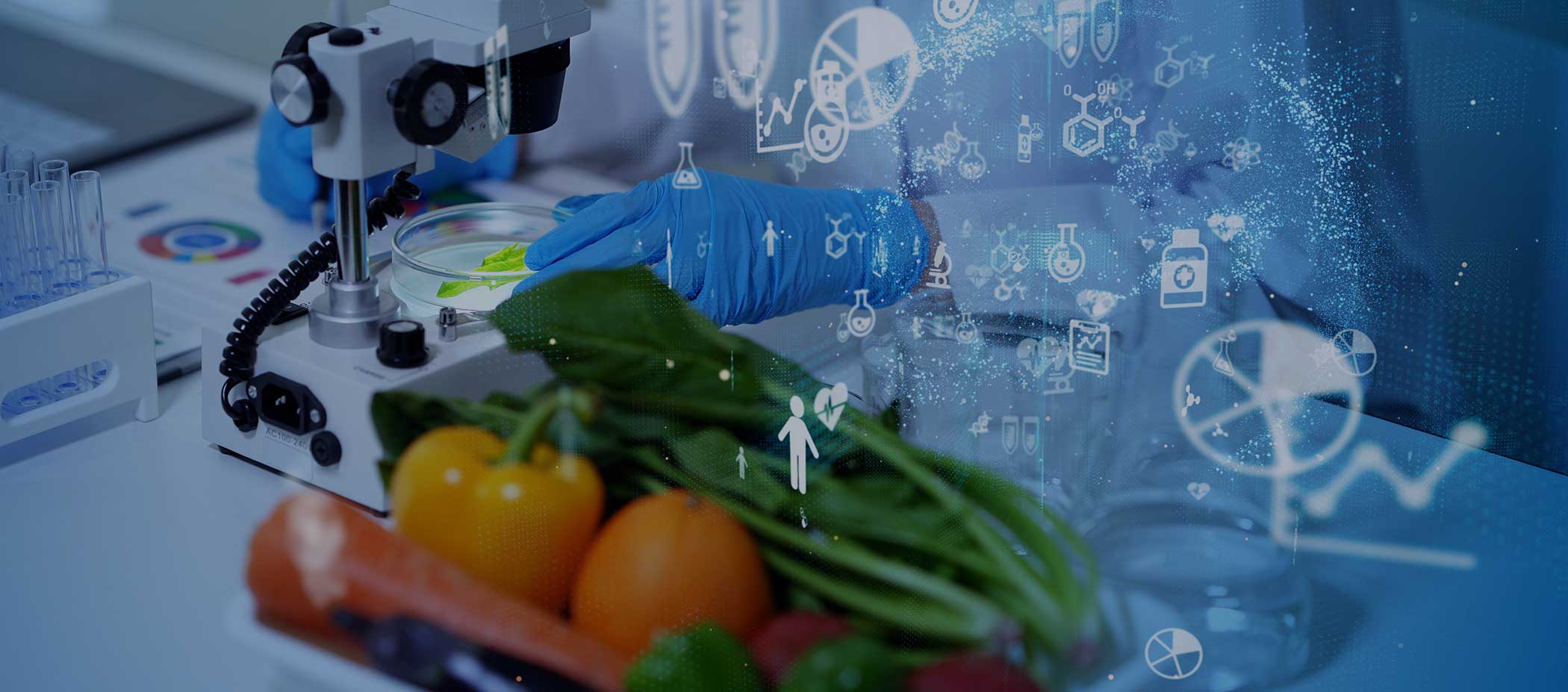Creating a culture that understands and works together
Introduction
In the evolving food safety landscape, leveraging data sharing is essential to ensure robust safety measures, transparency, and consumer trust.
This guide will outline strategies to overcome common objections, address other organizational priorities, and recommend actions to secure leadership and organizational buy-in for data sharing in food safety.
Outline:
10 Opportunities Of Aggregated Data.
- Enhanced Risk Identification and Management
- Improved Regulatory Compliance and Regulatory Influence using Data
- Increased Operational Efficiency
- Cost Savings
- Enhanced Consumer Trust and Brand Reputation
- Improve Decision-Making and Benchmarking
- Innovation and Continuous Improvement
- Crisis Management With Trusted Data
- Enhanced Supply Chain Coordination
- Competitive Advantage
Objections And How To Address Them
- Lack of Understanding of Predictive Analytics
- Data Privacy and Security Concerns
- Budget Constraints
- Resistance to Change
Actions to Secure Buy-In
- Step 1: Develop a Clear Value Proposition
- Step 2: Assign a Responsible Team
- Step 3: Start Small and Scale
- Step 4: Foster a Data-Driven Culture
- Step 5: Engage and Educate Leadership
- Step 6: Collaborate with External Partners
- Step 7: Choose the Right Technology Partner
Top 3 Organizational Benefits
- Production Efficiency
- Consumer Trust and Brand Reputation
- Regulatory Compliance
Understanding the importance and opportunities of data sharing in food safety
The Journey of Data in Food Safety
Just as food travels from farm or manufacturer to table, data related to food safety must travel along the same journey. Structured and digitized data sharing among producers, exporters, importers, regulators, and consumers enhances transparency, helps identify risks, and ensures a safer food supply chain.
Predictive Analytics and Value of Data
Traditional food safety testing methods, such as testing at the port of entry, are insufficient to verify the integrity and food safety of a product. Comprehensive data collection from the early stages of production provides valuable insights. Adding predictive analytics on top of this can help to foresee risks and mitigate them before they become issues, akin to having a Google Maps-like system for food safety, warning you of issues ahead.
10 Opportunities Of Aggregated Data
Organizations that engage in data sharing, especially in the context of food safety, can unlock several key opportunities. These opportunities not only enhance their operational efficiencies but also contribute to overall industry improvements and consumer trust. Here are the main opportunities for organizations that share data:
1. Enhanced Risk Identification and Management
- Early Detection: Data sharing allows for the early identification of potential food safety risks by aggregating data from multiple sources.
- Predictive Analytics: Using shared data to develop predictive models can help foresee and mitigate risks before they become critical issues.
2. Improved Regulatory Compliance and Regulatory Influence using Data
- Compliance Monitoring: Shared data can help ensure that all parties are meeting regulatory requirements by providing comprehensive and transparent data trails.
- Proactive Adjustments: Organizations can make proactive adjustments based on insights gained from shared data, ensuring ongoing compliance with evolving regulations.
- Policy Development: Organizations actively involved in data sharing and transparency can have a greater influence on the development of industry regulations and standards.
- Advocacy: Being at the forefront of data-sharing initiatives positions organizations as leaders and advocates for food safety.
3. Increased Operational Efficiency
- Streamlined Processes: Data sharing facilitates more efficient and streamlined processes by providing comprehensive insights into every step of the production and supply chain.
- Resource Optimization: Optimizing resources, such as labor and materials, based on data-driven insights leads to cost savings and improved productivity.
4. Cost Savings
- Reduced Waste: Shared data can help identify inefficiencies and areas of waste in production and supply chains, leading to cost reductions.
- Avoidance of Recalls: By identifying and addressing potential safety issues early, organizations can avoid costly recalls and associated reputational damage.
5. Enhanced Consumer Trust and Brand Reputation
- Transparency: Providing consumers with access to data about the safety and quality of their food can build trust and loyalty.
- Accountability: Demonstrating a commitment to food safety and quality through transparent data sharing can enhance a brand’s reputation and protect you in the midst of any unforeseen issues.
6. Improve Decision-Making and Benchmarking
- Data-Driven Insights: Access to a broader range of data provides more robust insights, leading to better strategic and operational decisions.
- Benchmarking: Organizations can benchmark their performance against industry standards and peers by sharing data.
7. Innovation and Continuous Improvement
- Collaborative Innovation: Data sharing fosters a collaborative environment where organizations can work together to innovate and improve food safety practices.
- Continuous Learning: Ongoing data collection and analysis lead to continuous improvement in food safety protocols and procedures.
8. Crisis Management
- Rapid Response: In the event of a food safety incident, shared data allows for a quicker and more coordinated response.
- Mitigation Strategies: Organizations can build trust through data sharing which can be invaluable in a crisis. You can also develop and implement more effective mitigation strategies based on your comprehensive data insights.
9. Enhanced Supply Chain Coordination
- Synchronization: Data sharing ensures that all stakeholders in the supply chain are synchronized, reducing the chances of miscommunication and errors.
- Visibility: Improved visibility across the supply chain helps in managing inventory, forecasting demand, and reducing disruptions.
10. Competitive Advantage
- Market Position: Organizations that effectively utilize shared data can gain a competitive edge by being more agile, efficient, and trusted by consumers.
- Strategic Partnerships: Data sharing can lead to strategic partnerships and collaborations, enhancing market positioning and capabilities.
By embracing data sharing, organizations can unlock numerous opportunities that lead to improved safety, efficiency, and trust in the food industry. These benefits not only help individual organizations but also contribute to a safer, more transparent, and collaborative industry as a whole.
Common Objections and How to Address Them
Objection 1: Lack of Understanding of Predictive Analytics
Challenge:
Leaders may be skeptical about the effectiveness of predictive analytics, viewing it as a “black box” and questioning its reliability over traditional methods.
Solution:
Educate leadership about the benefits and successes of predictive analytics in food safety. Use case studies and examples where predictive models have successfully identified and mitigated risks. Start with visualizations that everyone can understand and emphasize the potential for significant cost savings and enhanced safety outcomes. Creme Global has many great examples that we can share.
Objection 2: Data Privacy and Security Concerns
Challenge:
Organizations may fear that sharing data will compromise sensitive information, leading to competitive disadvantages or regulatory issues.
Solution:
Implement robust data anonymization and legal frameworks to protect shared data. Highlight successful examples of “Data Trusts”, like the fiin project in the UK, which uses legal privilege and secure anonymization systems to share authenticity concerns among 80 companies without compromising data privacy.
Objection 3: Budget Constraints
Challenge:
Investing in new data analytics tools and training may seem cost-prohibitive, especially if the return on investment (ROI) is not immediately clear.
Solution:
It is a nice benefit that data-sharing initiatives also share the cost of deploying the right data and analytics solutions among the participants. Furthermore, you can present a cost-benefit analysis that demonstrates the long-term savings and benefits of investing in data analytics. The value of the data set goes far beyond the initial question, which means that once the data collected answers your initial question, many more unforeseen benefits will emerge from that data set, such as operational efficiencies, yield improvements, and capital investment decisions. The point is to start collecting data. Furthermore, highlight the potential costs of not investing, such as the financial and reputational damage from food safety incidents.
Objection 4: Resistance to Change
Challenge:
Organizations may resist changing established processes, preferring to stick with traditional methods that have worked in the past.
Solution:
Facilitate change management processes by involving all stakeholders in the conversation. Ensure comprehensive training and support are provided to ease the adoption of new data practices. Demonstrate the added value and improved outcomes through “quick-win” project outputs and iterate and increment from there delivering and communicating wins along the way. The rate of change in the technology space is unprecedented. Companies have to change to keep up.
Actions to Secure Buy-In
Step 1: Develop a Clear Value Proposition
Create a clear value proposition for your data strategy that aligns with the organization’s overall goals. Start with a vision statement that illustrates the future goal. The strategy should then outline the benefits of data sharing, the steps required to implement it, and the expected outcomes. Ensure that this strategy is communicated effectively to all stakeholders.
Step 2: Assign a Responsible Team
As Cronan McNamara, Creme Global CEO, emphasized, a successful data strategy requires collaboration between business leaders, data scientists, industry experts, and IT professionals. Not all of these people need to be in your organization, as you can partner with a technology provider who will carry out the more technical roles. Your team is responsible for engaging in the project to drive success within your organization. Assemble a team with the required skills and perspectives to manage and drive the data initiative forward.
Step 3: Start Small and Scale
Begin with pilot projects that demonstrate the value of data sharing and predictive analytics. Use these projects to gather evidence of success and build confidence in the approach. Gradually scale up the initiative based on the learnings from these pilots.
Step 4: Foster a Data-Driven Culture
Promote a culture that values data-driven decision-making, e.g. educate people that ‘without data, all you have is an opinion’. Encourage continuous learning and development in data analytics skills across the organization. Recognize and reward employees who contribute to the success of the data initiative. We live in the digital era, embrace it.
Step 5: Engage and Educate Leadership
Regularly update leadership on the progress and successes of data initiatives. Use engaging dashboards and visualizations along the journey to show progress and to make the data accessible and understandable. Highlight the strategic advantages and potential competitive edge gained through data sharing.
Step 6: Collaborate with External Partners
Form partnerships with other organizations, industry groups, and regulators to share data and insights. Collaborative efforts can amplify the impact of data initiatives and lead to industry-wide improvements in food safety. Consider forming a formal data governance committee and implementing a data sharing agreement. Work with the committee to get scientific input, agree on terminology, and move the project toward the ultimate goals and vision.
Step 7: Choose the Right Technology Partner
Choose a technology partner who has a track record in secure data sharing and has the technical and scientific expertise and technology to deliver the project. The provider should have a secure data collection platform with data engineering connectors (APIs), data validation and visualization capabilities, and a predictive analytics capability along with a team with the expertise to configure and deploy this end-to-end system. Furthermore, ensure that your provider has the correct data privacy and ownership policies that protect your ownership of your data and restrict the use of the data to the agreed requirements of your project.
Top 3 Organizational Benefits
Priority 1: Production Efficiency
Solution:
Show how data sharing and predictive analytics can streamline production processes, reduce waste, and improve overall efficiency. For instance, real-time data monitoring can help optimize production and cleaning schedules and reduce downtime, ultimately saving costs.
Priority 2: Consumer Trust and Brand Reputation
Solution:
Emphasize the importance of data transparency in building consumer trust. In an era where consumers demand more information about the origins and safety of their food, data sharing can enhance brand reputation and loyalty.
Priority 3: Regulatory Compliance
Solution:
Illustrate how comprehensive data collection and sharing can help meet and exceed regulatory requirements. Predictive analytics can provide early warnings of potential compliance issues, allowing for proactive measures.
Tools and resources
These tools and resources can help your organization get buy-in from their senior team:
- Case Studies
- Demonstration Videos
- Presentations
- Workshops with the Creme Global Team
Conclusion
Securing leadership and organizational buy-in for data sharing in food safety is a multifaceted process to address objections, align with organizational priorities, and take strategic actions. By ensuring data security, demonstrating the value of predictive analytics, managing budget constraints through sharing the load, and fostering a data-driven culture, organizations can unlock the full potential of data to enhance food safety and protect consumers.
By embracing data sharing and predictive analytics, the food industry is moving towards a future where food safety is proactively managed, risks are mitigated before they become issues, and consumer trust is strengthened.



